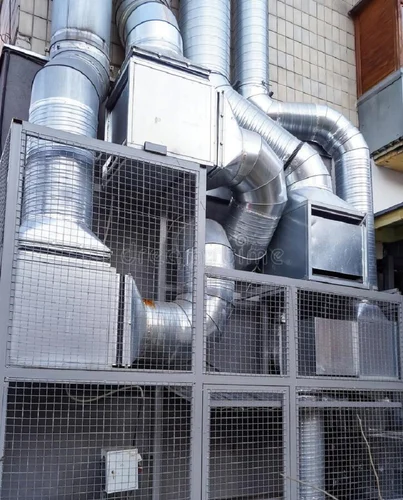Design, fabrication, and installation are integral phases in the construction process, ensuring that projects are executed efficiently and with precision. Let’s delve into each of these aspects to understand their significance and how they contribute to the success of construction endeavors to get what is a firewall in construction.
I. Understanding the Role of Design in Construction
A. Importance of Comprehensive Design Plans
Comprehensive design plans serve as the blueprint for construction projects, incorporating architectural and engineering specifications to guide the entire process. They ensure compliance with building codes and regulations while addressing the specific requirements and preferences of clients.
B. Utilization of Advanced Design Software
Advanced design software, including 3D modeling, Building Information Modeling (BIM), and virtual reality (VR) applications, revolutionize the design process. These tools facilitate visualization, simulation, and coordination among design professionals, enhancing efficiency and accuracy.
C. Collaboration Among Design Professionals
Effective collaboration among architects, engineers, and designers is essential for successful project outcomes. Coordination of design elements and systems streamlines communication and ensures seamless integration of various components during construction.
II. Fabrication Techniques and Processes
A. Cutting-Edge Fabrication Technologies
Cutting-edge fabrication technologies, such as CNC machining, laser cutting, and additive manufacturing (3D printing), enable precise and efficient production of construction components. Automated assembly lines and robotics further enhance productivity and quality.
B. Material Selection and Optimization
Careful selection and optimization of materials play a crucial role in fabrication processes. From structural steel and metal alloys to advanced composite materials, choosing the right materials ensures durability, sustainability, and performance in construction projects.
C. Quality Control Measures
Implementing rigorous quality control measures throughout the fabrication process is essential for maintaining standards and meeting specifications. Inspection and testing protocols, compliance with industry standards, and continuous improvement strategies uphold quality and reliability.
III. Precision Installation Practices
A. Site Preparation and Planning
Thorough site preparation and planning are essential for smooth installation processes. Evaluating site conditions, coordinating with other trades, and implementing safety protocols are crucial steps to ensure efficient and safe installations.
B. Skilled Workforce and Expertise
A skilled workforce with expertise in installation techniques is vital for achieving precision and accuracy in construction projects. Qualified tradespeople, supported by training and certification programs, bring valuable experience to complex installations.
C. Integration and Coordination
Effective integration and coordination among various trades and contractors are key to successful installations. Synchronization of installation phases, collaboration with general contractors, and on-site problem-solving contribute to seamless project execution.
IV. Ensuring Compliance and Safety
A. Regulatory Compliance
Strict adherence to building codes, regulations, and industry standards is paramount for ensuring compliance and regulatory approval. Inspection processes, certification, and meticulous documentation help meet legal requirements.
B. Implementation of Safety Measures
Implementing robust safety measures on construction sites protects workers and minimizes risks. Personal protective equipment (PPE), fall protection systems, and hazard identification protocols enhance safety and mitigate potential accidents.
C. Post-Installation Support
Providing post-installation support, including maintenance contracts, warranty coverage, and customer training, ensures ongoing satisfaction and performance. Addressing any issues promptly and offering support resources enhance client confidence and trust.
V. Achieving Project Success and Client Satisfaction
A. Timely Project Delivery
Timely project delivery is essential for meeting client expectations and project milestones. Efficient schedule management, resource allocation, and transparent communication contribute to successful outcomes.
B. Quality Craftsmanship and Durability
Attention to detail, quality craftsmanship, and consideration of long-term performance factors ensure durable and reliable construction outcomes. Striving for excellence in finishing and construction standards enhances project quality and longevity.
C. Client Engagement and Feedback
Engaging clients throughout the construction process and soliciting feedback post-project completion are essential for maintaining client satisfaction. Regular updates, satisfaction surveys, and post-project reviews demonstrate commitment to client needs and continuous improvement.

Leave a Reply